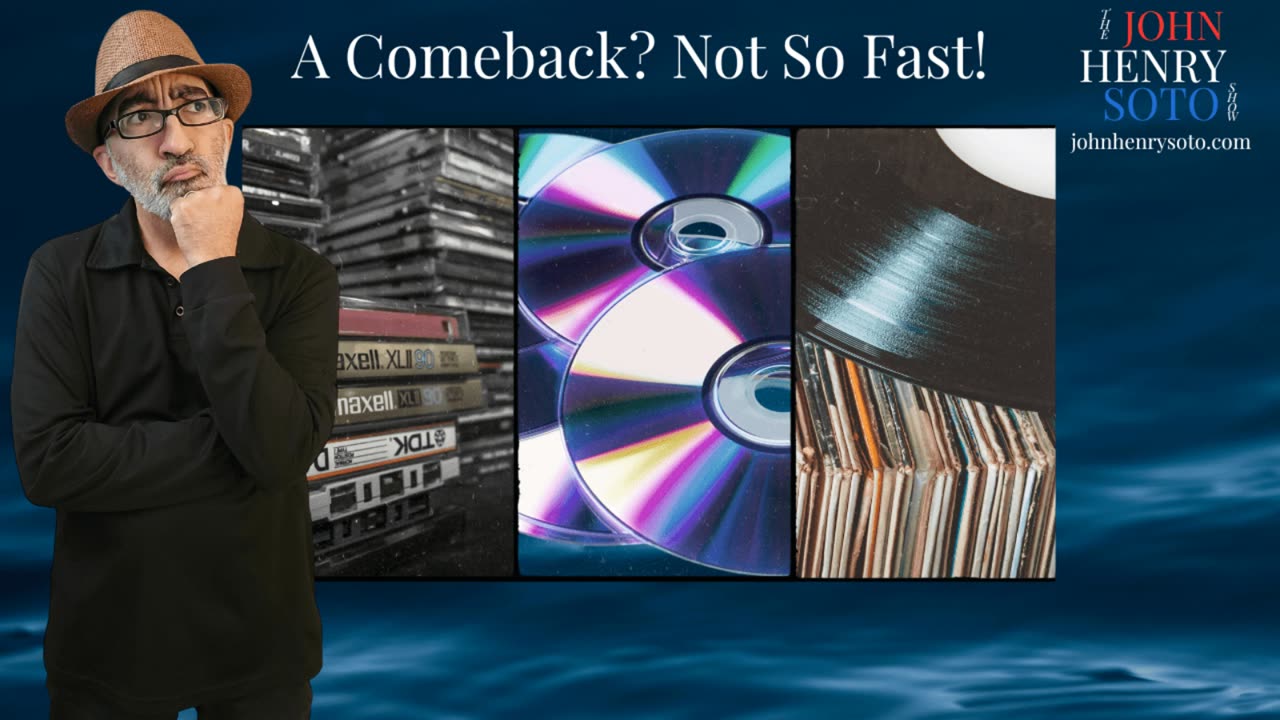Premium Only Content

Hyped & Deceived: The Physical Media Comeback That Isn’t.
In a world dominated by digital convenience, the decline in physical media sales—from CDs and DVDs to even vinyl and cassettes—might seem inevitable. Yet these formats continue to hold a powerful relevance that goes beyond nostalgia. They offer a tactile, personal experience that streaming simply can’t replicate. Holding an album cover, reading the liner notes, or even watching the bonus features on a DVD provides a connection to the artist and their intent that algorithms and auto-playlists can’t match. It’s not just about the sound or picture quality—though many argue that CDs and vinyl still outperform compressed streaming files—it’s about ownership, experience, and respect for the medium.
More importantly, owning physical media protects consumers from the volatility of streaming platforms. Movies, shows, and music disappear from services without notice due to licensing changes or corporate decisions. A film you love might vanish overnight, or an album might be altered or censored. But when you own a DVD or a CD, no one can take that content away from you. You’re not renting access—you have full control over when and how you experience the content. That kind of independence is becoming increasingly rare in a world where tech giants shape cultural consumption through data-driven recommendations.
Finally, the resurgence of vinyl and cassettes—especially among younger generations—proves that many people are searching for more meaningful and grounded ways to engage with art. Collecting physical media encourages intentional listening and viewing, often creating shared experiences among family and friends. It’s not about rejecting technology, but about reclaiming choice. By keeping a shelf of your favorite music and films, you’re declaring that art matters enough to preserve in its original form—unfiltered, uninterrupted, and fully yours.
-
 1:11:26
1:11:26
The John Henry Soto Show
14 days agoCan a Cry Baby Be Successful as an artist?
2141 -
 1:32:53
1:32:53
Flyover Conservatives
9 hours agoRicky Schroder Exposes How Hollywood Planted Him as a Child Star | FOC Show
31.3K4 -
 LIVE
LIVE
JahBlessCreates
3 hours ago🎉 TEKKEN TING, and maybe some music...
196 watching -
 LIVE
LIVE
GritsGG
4 hours agoTop 250 Ranked Grind! Dubulars!🫡
53 watching -
 LIVE
LIVE
StuffCentral
3 hours agoStar Stuffy
21 watching -
 6:02
6:02
Blackstone Griddles
5 hours agoPrime Rib Brisket Burgers on the Blackstone Griddle
9.38K2 -
 LIVE
LIVE
HELMETFIRE
3 hours ago🟢HELMETFIRE PLAYS: Silksong Part 4🟢
40 watching -
 1:14:07
1:14:07
Glenn Greenwald
10 hours agoGlenn Takes Your Questions: Billionaires, Bari Weiss and Journalism | SYSTEM UPDATE #509
69.5K34 -
 LIVE
LIVE
StevieTLIVE
4 hours agoFriday Night HYPE Warzone Games with Stevie
137 watching -
 4:11:15
4:11:15
SavageJayGatsby
1 day agoLet's Play: Sea of Thieves | Friend Friday
19.3K2